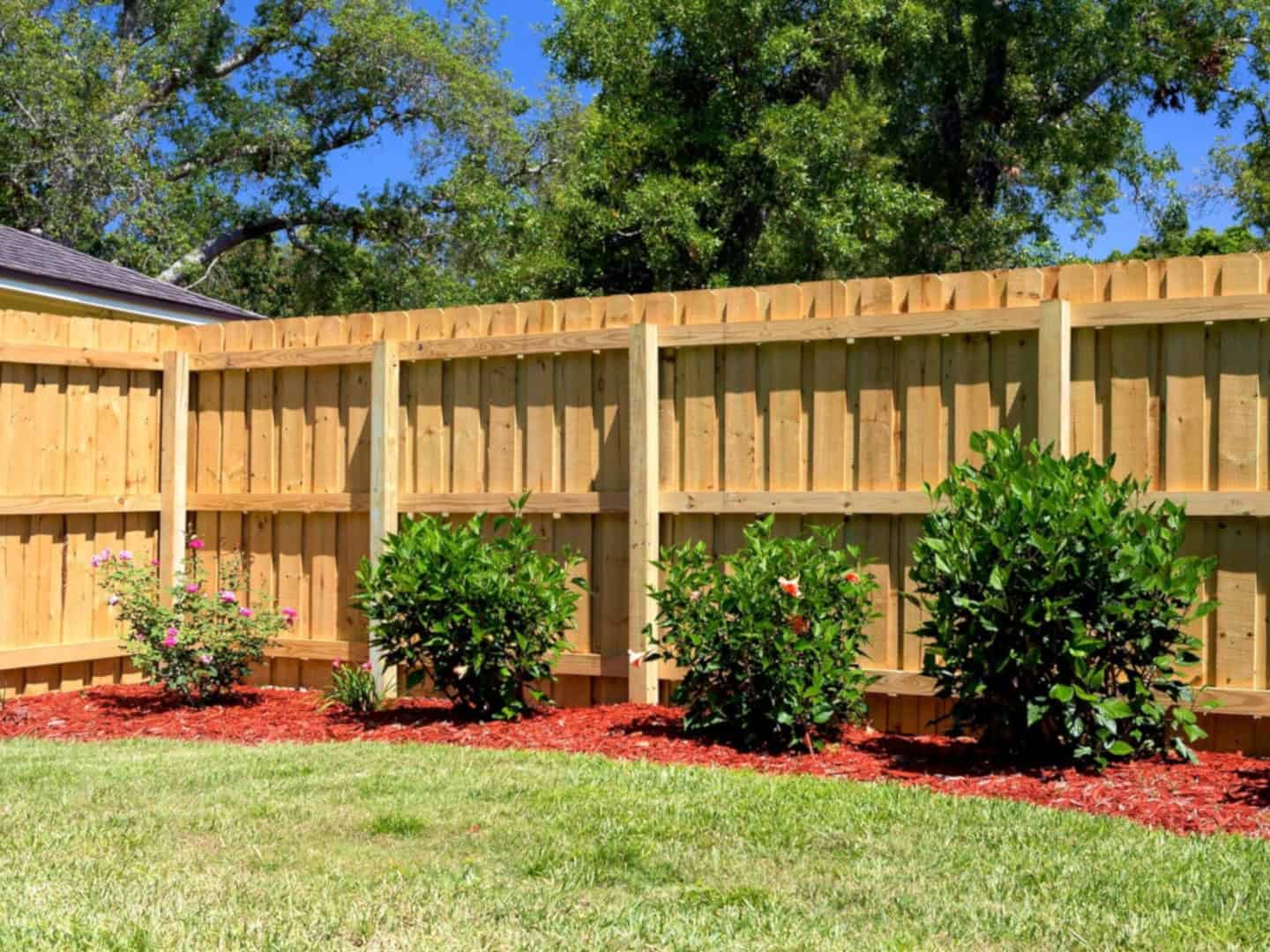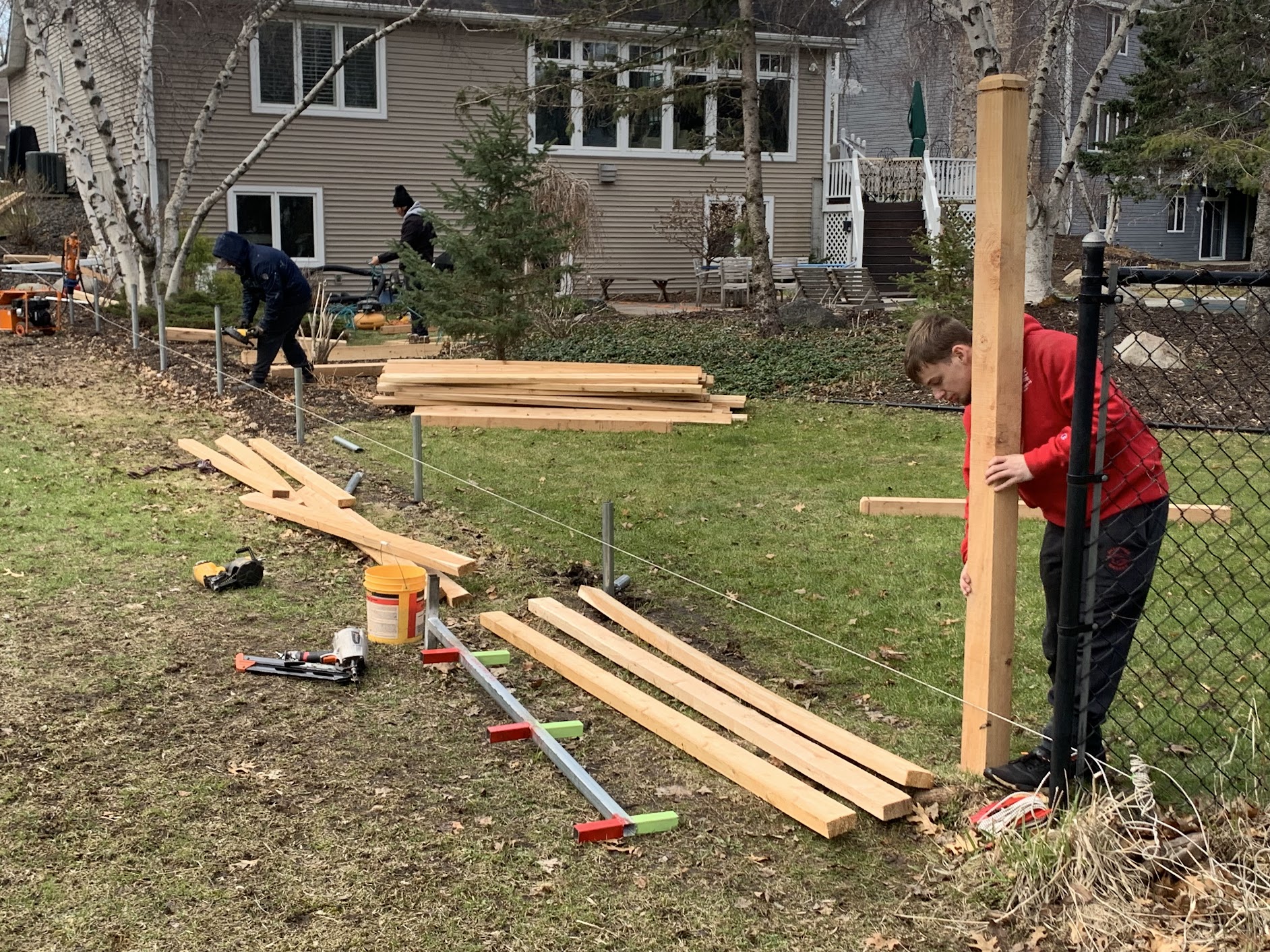Expert Advice on Fence Height and Placement from a Trusted fence company near me
Expert Advice on Fence Height and Placement from a Trusted fence company near me
Blog Article
The Ultimate Checklist for Effective Fencing Setup Projects
When you're planning a fence installation project, it's crucial to have a clear strategy in position. Start by defining your purpose and goals, whether it's for personal privacy or safety and security (Gadsden Fence). Recognizing regional policies can conserve you time and migraines later on. From there, choosing the right products is required for both longevity and looks. Yet there's more to consider before you begin. Let's check out the steps that will guarantee your task is a success
Specify Your Function and Objectives

Research Study Local Regulations and Permits
Just how do you ensure your fencing installation goes smoothly? Beginning by investigating neighborhood policies and licenses. Every area has particular regulations pertaining to fencing-- height, material, and placement can differ extensively. Consult your regional zoning workplace or structure division to understand what's needed in your neighborhood.You might need a license before you dig, especially if you're near home lines or energies. Failing to abide by policies can lead to fines and even having to take down your fence.Also, think about homeowners association (HOA) rules if you live in an area with one. They typically have additional guidelines that you'll require to adhere to.
Select the Right Products
When picking materials for your fence, think of durability and how they'll stand up versus the aspects. You'll additionally desire to strike a balance between looks and performance to assure your fence looks great while serving its function. Taking the time to select the right products can make all the difference in the durability and look of your fencing.
Product Resilience Considerations
As you select products for your fence, it's vital to assess their sturdiness, since different choices can greatly influence the longevity and maintenance of your setup. Timber, while aesthetically pleasing, requires normal therapy to fend off rot and parasites. On the other hand, plastic offers outstanding resistance to fading and cracking yet can be extra expensive upfront. Steel fences, like aluminum or wrought iron, supply strength and longevity, yet they might need periodic rust protection. Consider your regional climate too; severe weather can impact product performance. Eventually, selecting the appropriate resilient material will certainly save you money and time in the long run, ensuring your fence stands strong versus the aspects and minimizes upkeep efforts. Select intelligently!
Aesthetic and Functional Equilibrium
While you may focus on durability when selecting fencing materials, achieving an aesthetic and functional balance is just as important. Consider just how your selection matches your home's style and the surrounding landscape. Wood fencings can use charm but may require more maintenance, while plastic gives a streamlined, contemporary appearance with less upkeep. Steel fences, like functioned iron, can include style and security, but make specific they fit the general vibe of your property. Think about color, structure, and layout-- these aspects can boost your visual appeal. Always keep your local environment in mind, as it influences material efficiency. Ultimately, choose materials that not only offer their purpose yet additionally boost your exterior space's visual allure.
Strategy Your Fencing Design and Format
A solid strategy for your fencing style and layout is important to ensure an effective installation. Start by figuring out the purpose of your fencing-- whether it's for personal privacy, safety and security, or looks. Next, consider the style that enhances your home and landscape. You'll wish to choose materials that fit your spending plan and upkeep preferences.Measure your yard accurately, noting the boundaries where the fencing will certainly go. Believe about the elevation and spacing of the articles, guaranteeing they fulfill local laws. Lay out a layout to envision how your fencing will certainly look, remembering of any type of slopes or obstacles. Do not forget to represent gates for simple gain access to. Finally, talk to your next-door neighbors if the fencing impacts common residential property lines, promoting a good reputation and avoiding conflicts. By meticulously planning your style and design, you established the stage for a smooth installment process and a fence that meets your requirements.
Prepare Your Site for Installation
Prior to you start installing your fencing, you need to prepare the website. Clear the area of any type of obstacles, make certain you understand your building lines, and inspect regional policies to avoid any kind of problems. Taking these steps will certainly set a solid structure for your fence project.
Clear the Area
Clearing up the location is necessary for a smooth fencing setup. Begin by removing any barriers like rocks, particles, or old fence materials. This makes it simpler for you and your team to function successfully. Next, trim back any overgrown vegetation, such as shrubs or tree branches, that can disrupt the setup process. If you have any exterior furnishings or decorations near the fence line, relocate those out of the method. This not only protects against damage but additionally ensures your work area is secure. Lastly, take a moment to check for any below ground utilities. Call your regional utility business if you're uncertain. A clear, organized website establishes the phase for an effective and hassle-free installation.
Locate Residential Or Commercial Property Lines
Identifying your building lines is important to validate your fence is mounted correctly and legitimately. Start by assessing your home deed, which typically consists of a survey or map detailing the boundaries. If you do not have a survey, consider employing a specialist property surveyor. They'll mark the precise lines, aiding you prevent disagreements with next-door neighbors. As soon as you've established your boundaries, utilize stakes or flags to lay out the location where your fencing will go. This aesthetic aid not just helps you stay within your restrictions but additionally provides a clear recommendation for your installation. Keep in mind, clear residential property lines can save you from possible legal problems and neighborly problems in the future, so take the time to confirm precision prior to proceeding.

Inspect Local Regulations
Once you have actually established your residential or commercial property lines, checking local policies is the next action in preparing your website for setup. Neighborhood laws can dictate fence height, products, and even placement. Beginning by calling your local zoning office or visiting their site to collect required information. Make certain to ask about authorizations, as many areas require you to acquire one prior to you begin any kind of installation. Likewise, consider any type of house owner association (HOA) regulations that might apply in your community. Comprehending these guidelines upfront can save you from prospective fines or the requirement More Info to remove your fence later on. Taking these steps guarantees your fencing abides by neighborhood criteria and helps you stay clear of frustrations in the future.
Mount Your Fence Appropriately
When you're prepared to install your fence, guaranteeing correct placement and deepness is essential for its longevity and security. Start by marking the layout with risks and string to envision the click fencing line. See to it your articles are spaced uniformly, generally 6 to 8 feet apart, relying on your fencing type.Dig post holes at the very least one-third the size of the posts, and think about much deeper openings for included security, especially in gusty locations. Usage crushed rock near the bottom for drain and established the posts in concrete, assuring they're degree and plumb.While protecting the panels, maintain them straight and flush with the messages. If you're setting up a gateway, verify the measurements to guarantee it swings openly. After every little thing's in place, go back and validate that your fencing looks even and professional. Putting in the time to set up correctly currently will certainly save you headaches later!
Keep Your Fence for Durability
To maintain your fence looking wonderful and standing strong for years, normal upkeep is key (Gadsden Fence). Start by evaluating your fencing at the very least twice a year. Inspect for any kind of indications of damage, such as loosened boards or rusted hardware. If you area concerns, resolve them promptly to stop additional deterioration.Cleaning your fencing is similarly essential. Eliminate dirt, particles, and mold and mildew with a gentle soap solution and a soft brush. For wood fences, take into consideration applying a sealer or tarnish every couple of years to secure against moisture and UV rays.Don' t ignore vegetation! Cut back any plants or shrubs that may be leaning versus your fencing, as they can create damages over time.Finally, watch on the ground around your fence. Maintain proper drain to avoid water merging, which can deteriorate the structure. By complying with these steps, you'll assure your fencing stays stunning and functional for years to come
Often Asked Inquiries
How much time Does a Common Fence Installment Take?
A typical fence installment normally takes one to three days, relying on the dimension and complexity of the project. You ought to consider elements like climate, surface, and the kind of products you're making use of.

Can I Mount a Fence on a Slope?
Yes, you can set up a fence on an incline. You'll require to adjust the fence panels to follow the terrain, guaranteeing security and visual appeals. Make certain to prepare thoroughly to accomplish the very best outcomes.
What Devices Do I Required for Fencing Installation?
For fencing installation, you'll need a message opening miner, degree, gauging tape, hammer, saw, and a power drill. Don't fail to remember security equipment like gloves and safety glasses to shield on your own throughout the job.
Just how Do I Handle Utility Lines During Installment?
Prior to digging, always contact your neighborhood energy business to locate why not look here underground lines. Utilize an utility locator solution, note the areas plainly, and stay clear of excavating within those areas. It'll maintain you secure and prevent expensive damages.
What Is the Average Price of Fencing Installation?
The average cost of fencing setup varies extensively, generally varying from $1,500 to $4,000. Factors like materials, labor, and location affect your total amount costs, so it's smart to obtain numerous quotes prior to choosing.
Conclusion
In summary, by following this utmost list, you can ensure an effective fencing installation job that fulfills your requirements. Specifying your objectives, recognizing guidelines, choosing the ideal products, and preparing your website are all essential actions. Once your fencing is installed, recurring maintenance will maintain it looking great and functioning well for years to come - Gadsden Fence. With careful preparation and attention to detail, you'll create a fencing that not only improves your home yet also gives the privacy and security you want
Report this page